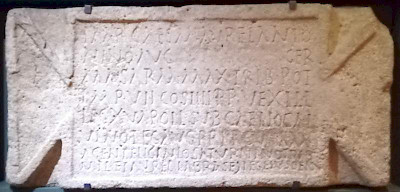"Chosroes"
"Chosroes": modern name of a king of Armenia (r. c.195-c.216 CE).

In the 195 CE, the Roman emperor Septimius Severus invaded the Parthian Empire, focusing on the cities of Edessa and Nisibis, in the border area between Parthia and Armenia. Two years later, he launched a second attack on the Parthians, which culminated in the sack of their capital Ctesiphon. He also wanted to conquer Armenia, although this country was probably loyal to Rome (see below). The Greco-Roman author Herodian writes:
But the king of the Armenians forestalled him by sending money, gifts, and hostages to support his plea for peace and by promising pacts and good will.note
The name of this anonymous king has been deduced from a Greek graffito, found in a tomb in the Valley of Kings near the South-Egyptian city of Thebes. Its discoverer, Henry Salt, did not record the precise location; it was published by Jean-Antoine Letronne under the header "sans désignation des syringes ou elles se trouvent".note
Χοσροῆς Ἂρμένιος ἴδὼν ἐθαύμασα
I, the Armenian Chosroes, was amazed when I saw this.note

Although the name "Chosroes" (also written as Osroes) is indeed a royal name in the Arsacid family, there is no reason to assume that this undated inscription refers to the anonymous king who saved Armenia.
If this king was the father of Tiridates II, he was at some point in control of pieces of Cappadocia and received Roman payments.note
That Armenia was, under normal circumstances, loyal to the Romans, may be deduced from the fact that there was a garrison, consisting of legionaries of XV Apollinaris. An inscription from Vagharshapat documents both the emperor Commodus (r.180-192) and a damnatio memoriae, which must have taken place at a later moment, perhaps during the reign of "Chosroes".